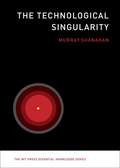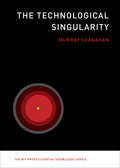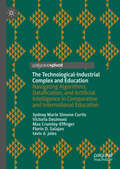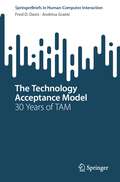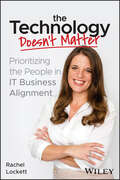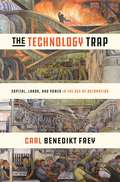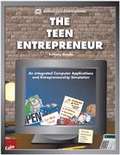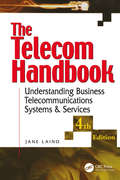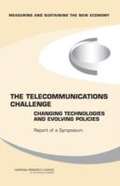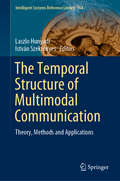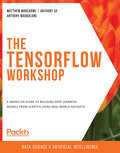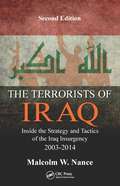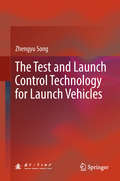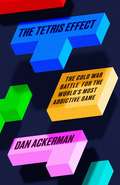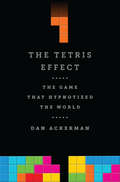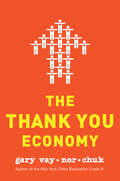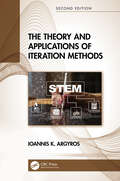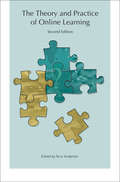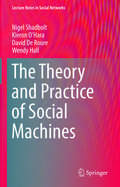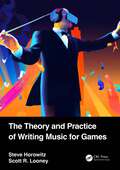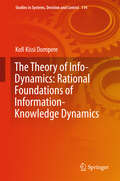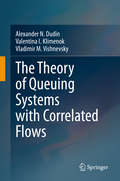- Table View
- List View
The Technological Singularity
by Murray ShanahanThe idea that human history is approaching a "singularity" -- that ordinary humans will someday be overtaken by artificially intelligent machines or cognitively enhanced biological intelligence, or both -- has moved from the realm of science fiction to serious debate. Some singularity theorists predict that if the field of artificial intelligence (AI) continues to develop at its current dizzying rate, the singularity could come about in the middle of the present century. Murray Shanahan offers an introduction to the idea of the singularity and considers the ramifications of such a potentially seismic event. Shanahan's aim is not to make predictions but rather to investigate a range of scenarios. Whether we believe that singularity is near or far, likely or impossible, apocalypse or utopia, the very idea raises crucial philosophical and pragmatic questions, forcing us to think seriously about what we want as a species. Shanahan describes technological advances in AI, both biologically inspired and engineered from scratch. Once human-level AI -- theoretically possible, but difficult to accomplish -- has been achieved, he explains, the transition to superintelligent AI could be very rapid. Shanahan considers what the existence of superintelligent machines could mean for such matters as personhood, responsibility, rights, and identity. Some superhuman AI agents might be created to benefit humankind; some might go rogue. (Is Siri the template, or HAL?) The singularity presents both an existential threat to humanity and an existential opportunity for humanity to transcend its limitations. Shanahan makes it clear that we need to imagine both possibilities if we want to bring about the better outcome.
The Technological Singularity (The MIT Press Essential Knowledge series)
by Murray ShanahanThe idea of technological singularity, and what it would mean if ordinary human intelligence were enhanced or overtaken by artificial intelligence.The idea that human history is approaching a “singularity”—that ordinary humans will someday be overtaken by artificially intelligent machines or cognitively enhanced biological intelligence, or both—has moved from the realm of science fiction to serious debate. Some singularity theorists predict that if the field of artificial intelligence (AI) continues to develop at its current dizzying rate, the singularity could come about in the middle of the present century. Murray Shanahan offers an introduction to the idea of the singularity and considers the ramifications of such a potentially seismic event.Shanahan's aim is not to make predictions but rather to investigate a range of scenarios. Whether we believe that singularity is near or far, likely or impossible, apocalypse or utopia, the very idea raises crucial philosophical and pragmatic questions, forcing us to think seriously about what we want as a species. Shanahan describes technological advances in AI, both biologically inspired and engineered from scratch. Once human-level AI—theoretically possible, but difficult to accomplish—has been achieved, he explains, the transition to superintelligent AI could be very rapid. Shanahan considers what the existence of superintelligent machines could mean for such matters as personhood, responsibility, rights, and identity. Some superhuman AI agents might be created to benefit humankind; some might go rogue. (Is Siri the template, or HAL?) The singularity presents both an existential threat to humanity and an existential opportunity for humanity to transcend its limitations. Shanahan makes it clear that we need to imagine both possibilities if we want to bring about the better outcome.
The Technological-Industrial Complex and Education: Navigating Algorithms, Datafication, and Artificial Intelligence in Comparative and International Education
by Florin D. Salajan tavis d. jules Max Crumley-Effinger Sydney Marie Curtis Victoria DesimoniThis Pivot book looks at the ways in which disruptive technologies, datafication, and Artificial Intelligence (AI) are shaping Comparative and International (CIE) Education and leading to its platformization. CIE entails the study of foreign educational systems in comparative perspective to discern what can be learned from approaches in various educational contexts and how these approaches might be applicable to other educational systems. The advent of advanced technologies, particularly AI, has been a game changer for research, teaching, and learning methods. It is within this context and at the intersection of deglobalization (and the retreat towards regionalization) and the rise of the fourth industrial revolution—that blends the biological, physical, and cyber-physical together—that this project seeks to describe the benefits and consequences of datafication and AI for the field of CIE.
The Technology Acceptance Model: 30 Years of TAM (Human–Computer Interaction Series)
by Fred D. Davis Andrina GranićThis SpringerBrief discusses the origins, emergence, evolution, and future of the Technology Acceptance Model (TAM). TAM, simple yet powerful, has been extensively validated, standing as a leading scientific paradigm and a reliable model for explaining, predicting, and improving user acceptance across a spectrum of technological deployments. Over more than three decades since the introduction of TAM, numerous extensions have emerged, incorporating additional variables and collectively referred to as “TAM++”. However, perceived usefulness and perceived ease of use remain the basic beliefs of the core TAM model. The introductory chapter “Once upon a TAM” focuses on the challenging search for a user acceptance crystal ball, showing that it is indeed possible to consistently predict, explain, and improve user acceptance. “Evolution of TAM” traces the model's growth and adaptability, exploring the proliferation of selected TAM-related behavioural intention models, several integrated theoretical approaches, the quest for other behavioural intention antecedents, and TAM’s versatile applications in various contexts. “Revolution of TAM” presents an in-depth systematic review, encompassing a meta-analysis of selected TAM reviews and meta-analyses, and a narrative review of representative primary studies, providing a thorough and extensive understanding of the TAM universe. The epilogue “What will the Future of TAM be Like?” provides insights into its dynamic future. This SpringerBrief concludes with seven actionable principles, serving as a strategic guide for those aiming to customize the TAM++ body of knowledge for application-oriented studies within a particular context. This comprehensive overview of TAM is a valuable source of information for researchers, practitioners, and all interested readers, especially those new to the field.
The Technology Doesn't Matter: Prioritizing the People in IT Business Alignment
by Rachel LockettDiscover the secret to productive IT-business alignment In The Technology Doesn’t Matter: Prioritizing the People in IT Business Alignment, veteran IT executive Rachel Lockett delivers an engaging and insightful discussion of how to turn around IT departments struggling to effectively collaborate with their business counterparts. In the book, you’ll explore the proven and established People-Process-Technology framework and break down innovative approaches to IT-business alignment in a clear and accessible style. The author explains how to “manage up” and “manage down” to create inter- and intra-departmental synergy, as well as: How to identify the four types of business leaders, and the ways they can contribute to an effective IT business alignment Practical solutions to even the most seemingly intractable technology alignment problems Hands-on professional development guidance for IT and business leadersAn essential and original resource for executives, managers, directors, founders, entrepreneurs, and other business leaders, The Technology Doesn’t Matter will also appeal to tech leaders and technology service providers seeking to better communicate with non-technical professionals. It’s also a practical handbook for business leaders who want to better understand, relate to, and collaborate with their IT colleagues, improve engagement and retention amongst IT employees, and align the interests of technical and non-technical professionals.
The Technology Toolbelt for Teaching
by Susan Manning Kevin E. JohnsonInstructors are pressured to integrate technology into their traditional or online instruction. This book offers a hands-on resource that shows how to integrate technology into lessons and offers information about common technologies, categorizing by groups, and explains the purposes they serve pedagogically as well as how they can be most effectively used in online or face-to-face classrooms. In addition to examples, each chapter will feature a decision making matrix to help instructors decide on whether or not a tool is really needed based on curriculum objectives or a specific organizational or curricular problem.
The Technology Trap: Capital, Labor, and Power in the Age of Automation
by Carl Benedikt FreyHow the history of technological revolutions can help us better understand economic and political polarization in the age of automation From the Industrial Revolution to the age of artificial intelligence, The Technology Trap takes a sweeping look at the history of technological progress and how it has radically shifted the distribution of economic and political power among society’s members. As Carl Benedikt Frey shows, the Industrial Revolution created unprecedented wealth and prosperity over the long run, but the immediate consequences of mechanization were devastating for large swaths of the population. Middle-income jobs withered, wages stagnated, the labor share of income fell, profits surged, and economic inequality skyrocketed. These trends, Frey documents, broadly mirror those in our current age of automation, which began with the Computer Revolution.Just as the Industrial Revolution eventually brought about extraordinary benefits for society, artificial intelligence systems have the potential to do the same. But Frey argues that this depends on how the short term is managed. In the nineteenth century, workers violently expressed their concerns over machines taking their jobs. The Luddite uprisings joined a long wave of machinery riots that swept across Europe and China. Today’s despairing middle class has not resorted to physical force, but their frustration has led to rising populism and the increasing fragmentation of society. As middle-class jobs continue to come under pressure, there’s no assurance that positive attitudes to technology will persist.The Industrial Revolution was a defining moment in history, but few grasped its enormous consequences at the time. The Technology Trap demonstrates that in the midst of another technological revolution, the lessons of the past can help us to more effectively face the present.
The Teen Entrepreneur: An Integrated Computer Applications and Entrepreneurship Simulation
by Anthony MasalaThis simulation has been developed to provide teenage-level students with an in-depth, real-world experience in creating a comprehensive business plan for a student-selected teen-based business. The Teen Entrepreneur contains a collection of 21 individual projects designed to give students hands-on practice in using their computer skills to create a variety of standard business plan documents and marketing materials for their own business.
The Telecom Handbook: Understanding Telephone Systems and Services
by Jane LainoWhether you're an IT professional, a telecom professional, an office administrator, or just starting out in the business world, this book provides you with an organized, easy-to-use introduction to business telecommunications systems and services. It does
The Telecommunications Challenge: Changing Technologies And Evolving Policies
by National Research Council of the National AcademiesStarting in the mid 1990s, the United States economy experienced an unprecedented upsurge in economic productivity. Rapid technological change in communications, computing, and information management continue to promise further gains in productivity, a phenomenon often referred to as the New Economy. To better understand the sources of these gains and the policy measures needed to sustain these positive trends, the National Academies Board on Science, Technology, and Economic Policy (STEP) convened a series of workshops and commissioned papers on Measuring and Sustaining the New Economy. This workshop, entitled “The Telecommunications Challenge: Changing Technologies and Evolving Policies,” brought together leading industry representatives and government officials to discuss issues generated by the rapid technological change occurring in the telecommunications industry and the regulatory and policy challenges this creates. The workshop presented a variety of perspectives relating to developments in the telecommunications industry such as the potential of and impediments to broadband technology.
The Temporal Structure of Multimodal Communication: Theory, Methods and Applications (Intelligent Systems Reference Library #164)
by Laszlo Hunyadi István SzekrényesThe general focus of this book is on multimodal communication, which captures the temporal patterns of behavior in various dialogue settings. After an overview of current theoretical models of verbal and nonverbal communication cues, it presents studies on a range of related topics: paraverbal behavior patterns in the classroom setting; a proposed optimal methodology for conversational analysis; a study of time and mood at work; an experiment on the dynamics of multimodal interaction from the observer’s perspective; formal cues of uncertainty in conversation; how machines can know we understand them; and detecting topic changes using neural network techniques. A joint work bringing together psychologists, communication scientists, information scientists and linguists, the book will be of interest to those working on a wide range of applications from industry to home, and from health to security, with the main goals of revealing, embedding and implementing a rich spectrum of information on human behavior.
The TensorFlow Workshop: A hands-on guide to building deep learning models from scratch using real-world datasets
by Matthew Moocarme Anthony So Anthony MaddaloneGet started with TensorFlow fundamentals to build and train deep learning models with real-world data, practical exercises, and challenging activitiesKey FeaturesUnderstand the fundamentals of tensors, neural networks, and deep learningDiscover how to implement and fine-tune deep learning models for real-world datasetsBuild your experience and confidence with hands-on exercises and activitiesBook DescriptionGetting to grips with tensors, deep learning, and neural networks can be intimidating and confusing for anyone, no matter their experience level. The breadth of information out there, often written at a very high level and aimed at advanced practitioners, can make getting started even more challenging.If this sounds familiar to you, The TensorFlow Workshop is here to help. Combining clear explanations, realistic examples, and plenty of hands-on practice, it'll quickly get you up and running. You'll start off with the basics – learning how to load data into TensorFlow, perform tensor operations, and utilize common optimizers and activation functions. As you progress, you'll experiment with different TensorFlow development tools, including TensorBoard, TensorFlow Hub, and Google Colab, before moving on to solve regression and classification problems with sequential models. Building on this solid foundation, you'll learn how to tune models and work with different types of neural network, getting hands-on with real-world deep learning applications such as text encoding, temperature forecasting, image augmentation, and audio processing.By the end of this deep learning book, you'll have the skills, knowledge, and confidence to tackle your own ambitious deep learning projects with TensorFlow.What you will learnGet to grips with TensorFlow's mathematical operationsPre-process a wide variety of tabular, sequential, and image dataUnderstand the purpose and usage of different deep learning layersPerform hyperparameter-tuning to prevent overfitting of training dataUse pre-trained models to speed up the development of learning modelsGenerate new data based on existing patterns using generative modelsWho this book is forThis TensorFlow book is for anyone who wants to develop their understanding of deep learning and get started building neural networks with TensorFlow. Basic knowledge of Python programming and its libraries, as well as a general understanding of the fundamentals of data science and machine learning, will help you grasp the topics covered in this book more easily.
The Terrorists of Iraq: Inside the Strategy and Tactics of the Iraq Insurgency 2003-2014, Second Edition
by Malcolm W. NanceThe Terrorists of Iraq: Inside the Strategy and Tactics of the Iraq Insurgency 2003-2014, Second Edition is a highly detailed and exhaustive history and analysis of terror groups that both formed the Iraq insurgency and led to the rise of the Islamic State of Iraq and Syria (ISIS). It places heavy emphasis on the history, organization, and personal
The Test and Launch Control Technology for Launch Vehicles
by Zhengyu SongThis book presents technologies and solutions related to the test and launch control of rockets and other vehicles, and offers the first comprehensive and systematic introduction to the contributions of the Chinese Long March (Chang Zheng in Chinese, or abbreviated as CZ) rockets in this field. Moreover, it discusses the role of this technology in responsive, reliable, and economical access to space, which is essential for the competitiveness of rockets. The need for rapid development of the aerospace industry for both governmental and commercial projects is addressed. This book is a valuable reference resource for practitioners, and many examples and resources are included, not only from Chinese rockets but also from many other vehicles. It covers guidelines, technologies, and solutions on testing and launch control before rocket takeoff, covering equipment-level testing, system-level testing, simulation tests, etc.
The Tetris Effect: The Cold War Battle for the World's Most Addictive Game
by Dan Ackerman21 February 1989. Three men fly into Moscow, representing software giants from Britain, America, and Japan. Each of them is determined to undercut the others in order to secure a technology so powerfully addictive it has brought the government department that created it to a standstill. In a country on the brink of seismic change, where spycraft is about to give way to cut-throat capitalism, Tetris has become the grand prize. Featuring corporate espionage, unmarked government organizations, courtroom drama and international conspiracies, the origin of the world&’s most popular video game is a gripping, fast-paced thriller of the highest order. Not only this, but it is also the tale of a one-in-a-million software start-up – a unique example of an idea, a product, and an era coming together at exactly the right moment. Tetris was perfectly (if accidentally) crafted to hit primal triggers in our minds and in Ackerman&’s hands its story is unputdownable.
The Tetris Effect: The Game that Hypnotized the World
by Dan AckermanThe definitive story of a game so great, even the Cold War couldn't stop itTetris is perhaps the most instantly recognizable, popular video game ever made. But how did an obscure Soviet programmer, working on frail, antiquated computers, create a product which has now earned nearly 1 billion in sales? How did a makeshift game turn into a worldwide sensation, which has been displayed at the Museum of Modern Art, inspired a big-budget sci-fi movie, and been played in outer space?A quiet but brilliant young man, Alexey Pajitnov had long nurtured a love for the obscure puzzle game pentominoes, and became obsessed with turning it into a computer game. Little did he know that the project that he labored on alone, hour after hour, would soon become the most addictive game ever made.In this fast-paced business story, reporter Dan Ackerman reveals how Tetris became one of the world's first viral hits, passed from player to player, eventually breaking through the Iron Curtain into the West. British, American, and Japanese moguls waged a bitter fight over the rights, sending their fixers racing around the globe to secure backroom deals, while a secretive Soviet organization named ELORG chased down the game's growing global profits.The Tetris Effect is an homage to both creator and creation, and a must-read for anyone who's ever played the game—which is to say everyone.
The Text Mining Handbook
by Ronen Feldman James SangerText mining tries to solve the crisis of information overload by combining techniques from data mining, machine learning, natural language processing, information retrieval, and knowledge management. In addition to providing an in-depth examination of core text mining and link detection algorithms and operations, this book examines advanced pre-processing techniques, knowledge representation considerations, and visualization approaches. Finally, it explores current real-world, mission-critical applications of text mining and link detection in such varied fields as M&A business intelligence, genomics research and counter-terrorism activities.
The Thank You Economy
by Gary Vaynerchuk“Gary Vaynerchuk has seen the future of marketing. The Thank You Economy shows how it's built on both the time-honored techniques of listening to and appreciating customers and newer services like Twitter that allow you to engage directly with customers at unprecedented scale and speed. The book, like Gary, is also a lot of fun and full of passion.” —Dick Costolo, chief executive officer, TwitterGary Vaynerchuk, the New York Times bestselling author and creator of Wine Library TV, is back with a bold and expansive look at the evolution of today's marketplace, revealing the essential factors defining and driving successful relationships between businesses and consumers. In this groundbreaking follow-up to the bestselling Crush It!, Vaynerchuk—one of Bloomberg Businessweek’s “20 People Every Entrepreneur Should Follow”—looks beyond a numbers-based analysis to explore the value of social interactions in building our economy.
The Theory and Applications of Iteration Methods
by Ioannis K. ArgyrosThe theory and applications of Iteration Methods is a very fast-developing field of numerical analysis and computer methods. The second edition is completely updated and continues to present the state-of-the-art contemporary theory of iteration methods with practical applications, exercises, case studies, and examples of where and how they can be used. The Theory and Applications of Iteration Methods, Second Edition includes newly developed iteration methods taking advantage of the most recent technology (computers, robots, machines). It extends the applicability of well-established methods by increasing the convergence domain and offers sharper error tolerance. New proofs and ideas for handling convergence are introduced along with a new variety of story problems picked from diverse disciplines. This new edition is for researchers, practitioners, and students in engineering, economics, and computational sciences.
The Theory and Craft of Digital Preservation
by Trevor OwensA guide to managing data in the digital age.Winner of the ALCTS Outstanding Publication Award by the Association for Library Collections & Technical Services, Winner of the Waldo Gifford Leland Award by the Society of American ArchivistsMany people believe that what is on the Internet will be around forever. At the same time, warnings of an impending "digital dark age"—where records of the recent past become completely lost or inaccessible—appear with regular frequency in the popular press. It's as if we need a system to safeguard our digital records for future scholars and researchers. Digital preservation experts, however, suggest that this is an illusory dream not worth chasing. Ensuring long-term access to digital information is not that straightforward; it is a complex issue with a significant ethical dimension. It is a vocation.In The Theory and Craft of Digital Preservation, librarian Trevor Owens establishes a baseline for practice in this field. In the first section of the book, Owens synthesizes work on the history of preservation in a range of areas (archives, manuscripts, recorded sound, etc.) and sets that history in dialogue with work in new media studies, platform studies, and media archeology. In later chapters, Owens builds from this theoretical framework and maps out a more deliberate and intentional approach to digital preservation. A basic introduction to the issues and practices of digital preservation, the book is anchored in an understanding of the traditions of preservation and the nature of digital objects and media. Based on extensive reading, research, and writing on digital preservation, Owens's work will prove an invaluable reference for archivists, librarians, and museum professionals, as well as scholars and researchers in the digital humanities.
The Theory and Practice of Online Learning
by Terry AndersonIn this important collection of essays by practitioners and scholars that has been downloaded nearly half a million times is an overview of some of the most pressing issues in online education. By addressing transformations arising from educational technology advances and the new business conditions and modes of delivery of education, the contributors to The Theory and Practice of Online Learning provide insights into this complex, diverse, and rapidly evolving field.
The Theory and Practice of Social Machines (Lecture Notes in Social Networks)
by Wendy Hall Nigel Shadbolt Kieron O’Hara David De RoureSocial machines are a type of network connected by interactive digital devices made possible by the ubiquitous adoption of technologies such as the Internet, the smartphone, social media and the read/write World Wide Web, connecting people at scale to document situations, cooperate on tasks, exchange information, or even simply to play. Existing social processes may be scaled up, and new social processes enabled, to solve problems, augment reality, create new sources of value, and disrupt existing practice.This book considers what talents one would need to understand or build a social machine, describes the state of the art, and speculates on the future, from the perspective of the EPSRC project SOCIAM – The Theory and Practice of Social Machines. The aim is to develop a set of tools and techniques for investigating, constructing and facilitating social machines, to enable us to narrow down pragmatically what is becoming a wide space, by asking ‘when will it be valuable to use these methods on a sociotechnical system?’ The systems for which the use of these methods adds value are social machines in which there is rich person-to-person communication, and where a large proportion of the machine’s behaviour is constituted by human interaction.
The Theory and Practice of Writing Music for Games
by Steve Horowitz Scott R. LooneyThe nature of game music charges the modern-day composer with understanding a whole host of aesthetic and technical principles unique to the medium. Based on years of working in the field, as well as teaching the subject at colleges and universities, The Theory and Practice of Writing Music for Games is an invaluable resource for those looking for a classroom tested, directed course of study. As players and composers, themselves, authors Steve Horowitz and Scott R. Looney share the inspiration and joy of game music with an emphasis on critical thinking and the creative process, exploring the parallels and distinctions to concert music, film, TV, cartoons, and other popular forms. Each chapter builds on the next and guides the reader step by step through the essentials. Along with all the theory, a multitude of clearly defined hands-on projects and exercises are included, designed to prepare the reader to go out into the field with a complete understanding of the art and craft of music composition for games and visual media. Key Features:• Discusses a variety of topics in a simple and easy-to-understand format.• Provides a valuable resource for teachers and students, anyone who is looking to build a career in music for games.• Breaks down the fundamentals needed to build your career.• Includes fun and practical exercises that strengthen your composer chops.
The Theory of Info-Dynamics: Rational Foundations of Information-Knowledge Dynamics
by Kofi K. DompereThis book focuses on the development of a theory of info-dynamics to support the theory of info-statics in the general theory of information. It establishes the rational foundations of information dynamics and how these foundations relate to the general socio-natural dynamics from the primary to the derived categories in the universal existence and from the potential to the actual in the ontological space. It also shows how these foundations relate to the general socio-natural dynamics from the potential to the possible to give rise to the possibility space with possibilistic thinking; from the possible to the probable to give rise to possibility space with probabilistic thinking; and from the probable to the actual to give rise to the space of knowledge with paradigms of thought in the epistemological space. The theory is developed to explain the general dynamics through various transformations in quality-quantity space in relation to the nature of information flows at each variety transformation. The theory explains the past-present-future connectivity of the evolving information structure in a manner that illuminates the transformation problem and its solution in the never-ending information production within matter-energy space under socio-natural technologies to connect the theory of info-statics, which in turn presents explanations to the transformation problem and its solution. The theoretical framework is developed with analytical tools based on the principle of opposites, systems of actual-potential polarities, negative-positive dualities under different time-structures with the use of category theory, fuzzy paradigm of thought and game theory in the fuzzy-stochastic cost-benefit space. The rational foundations are enhanced with categorial analytics.The value of the theory of info-dynamics is demonstrated in the explanatory and prescriptive structures of the transformations of varieties and categorial varieties at each point of time and over time from parent–offspring sequences. It constitutes a general explanation of dynamics of information-knowledge production through info-processes and info-processors induced by a socio-natural infinite set of technologies in the construction–destruction space.
The Theory of Queuing Systems with Correlated Flows
by Alexander N. Dudin Valentina I. Klimenok Vladimir M. VishnevskyThis book is dedicated to the systematization and development of models, methods, and algorithms for queuing systems with correlated arrivals. After first setting up the basic tools needed for the study of queuing theory, the authors concentrate on complicated systems: multi-server systems with phase type distribution of service time or single-server queues with arbitrary distribution of service time or semi-Markovian service. They pay special attention to practically important retrial queues, tandem queues, and queues with unreliable servers. Mathematical models of networks and queuing systems are widely used for the study and optimization of various technical, physical, economic, industrial, and administrative systems, and this book will be valuable for researchers, graduate students, and practitioners in these domains.
